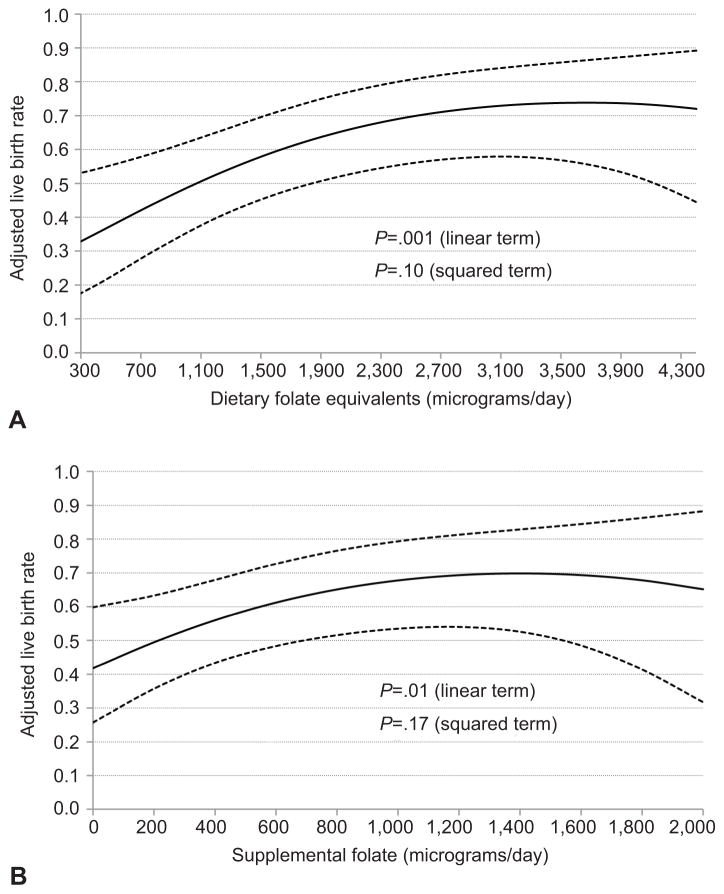Figure 2.
Associations between folate intake and live birth rates in 232 women (353 initiated cycles) from the Environment and Reproductive Health Study. Shown are the associations between total folate (in dietary folate equivalents) (A) and supplemental folate (B) and live birth rate per initiated cycle after assisted reproductive technology. All analyses were run using a generalized linear mixed model with random intercepts, binomial distribution, and logit link function. The solid line represents the adjusted mean live birth rate by level of folate intake and the dotted lines are the upper and lower 95% confidence intervals for these adjusted means. Adjusted means presented for average total calorie intake (1797 kcals/day), age (35 years), body mass index (24.3 kg/m2), race (white), smoking status (never smoker), infertility diagnosis (female factor), and protocol type (luteal phase agonist).

